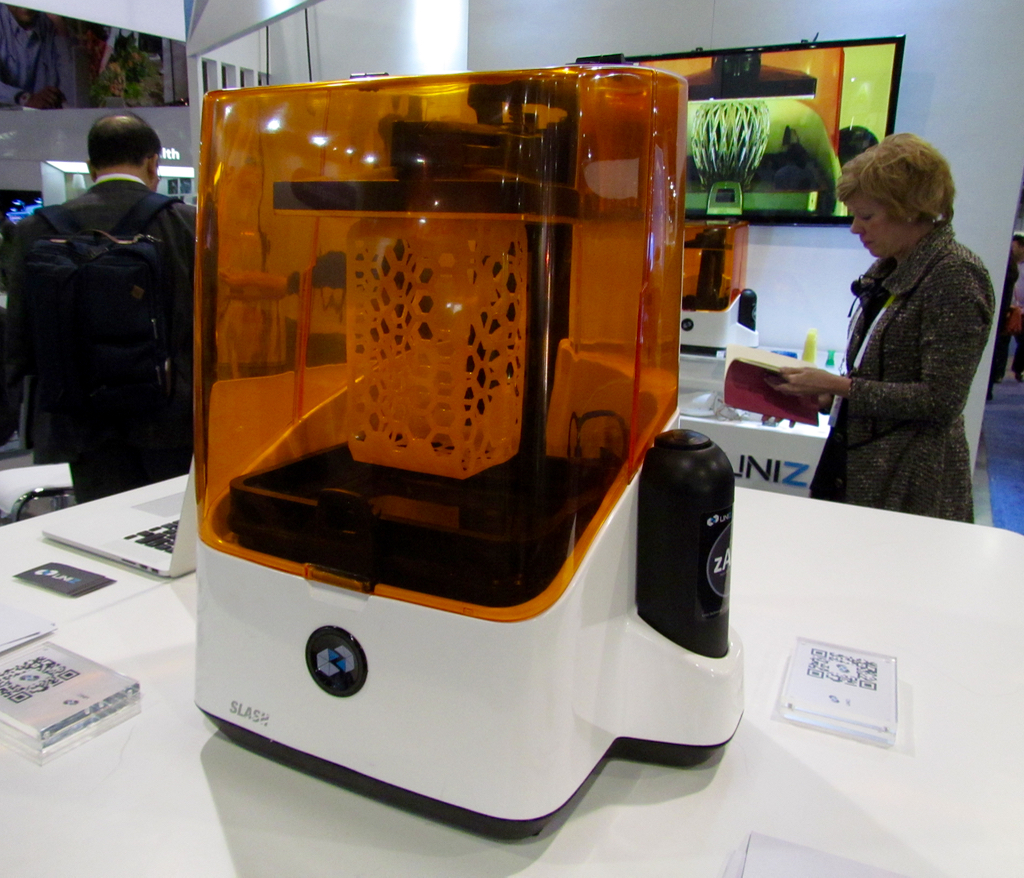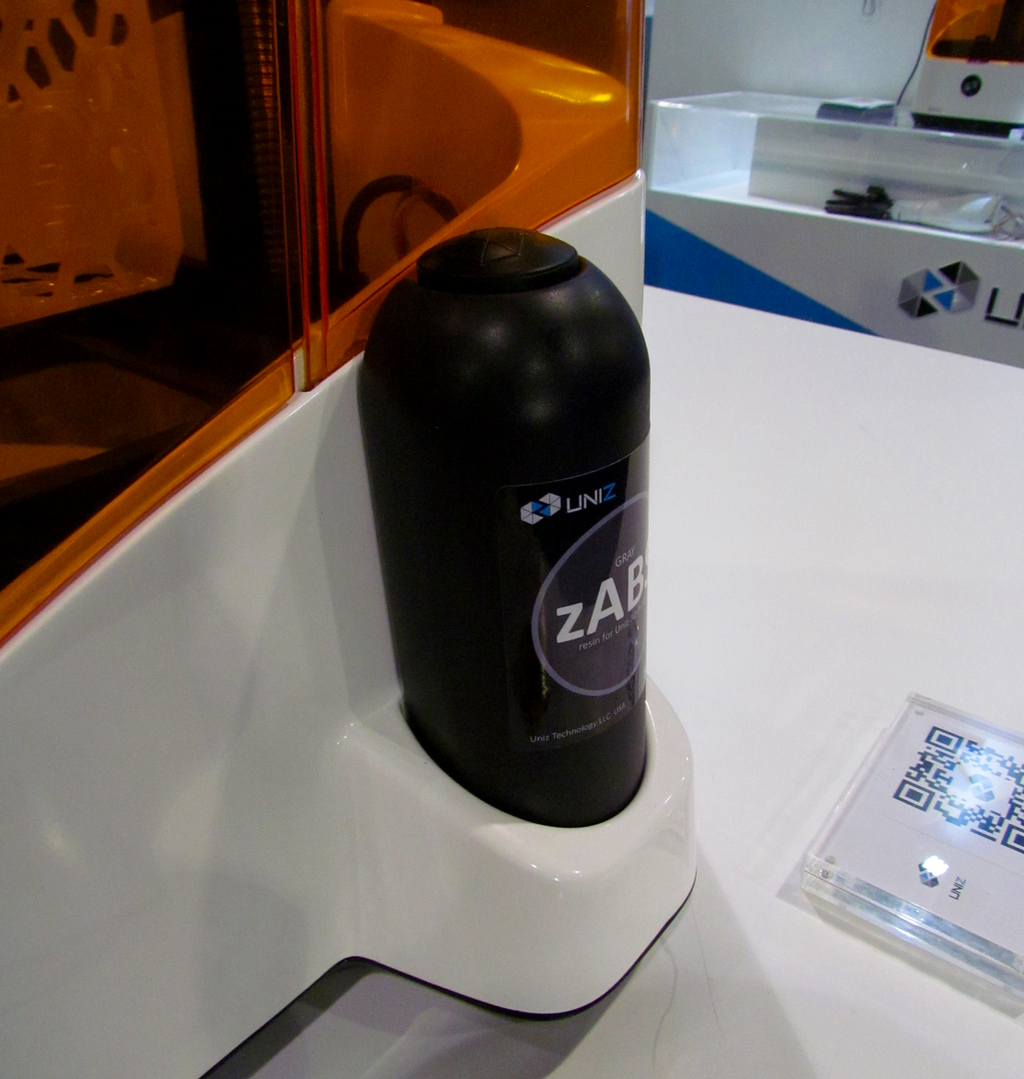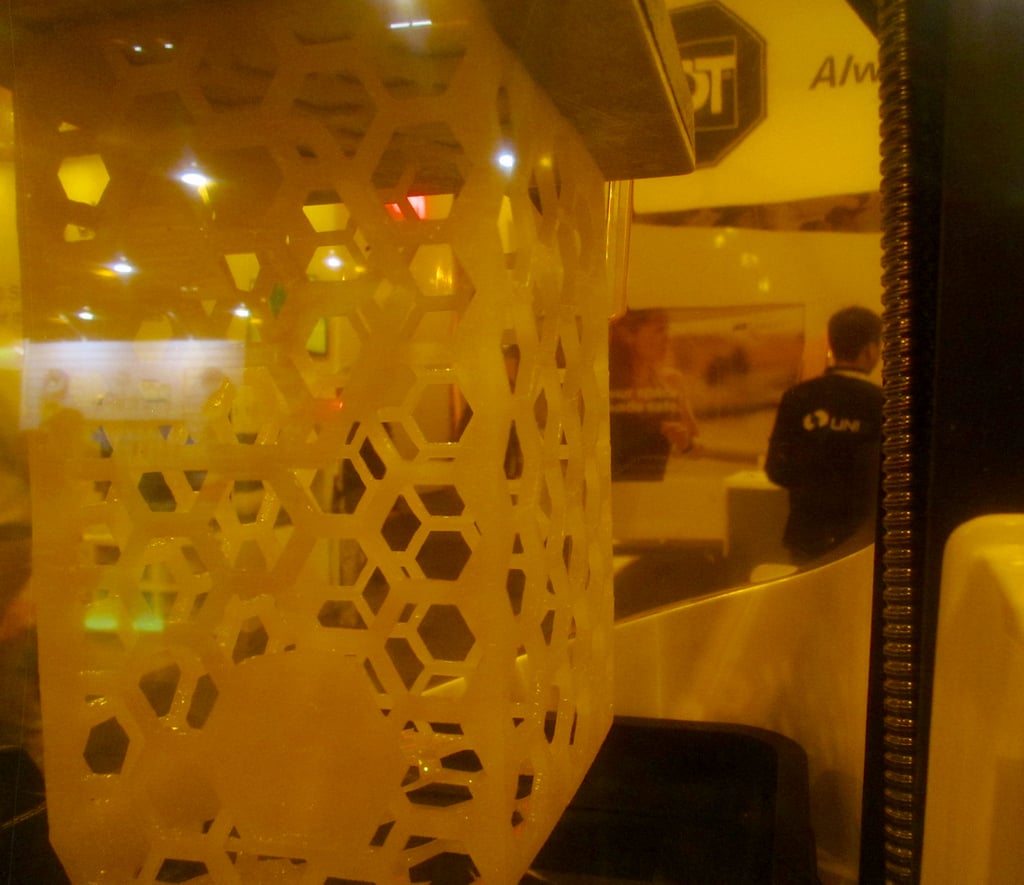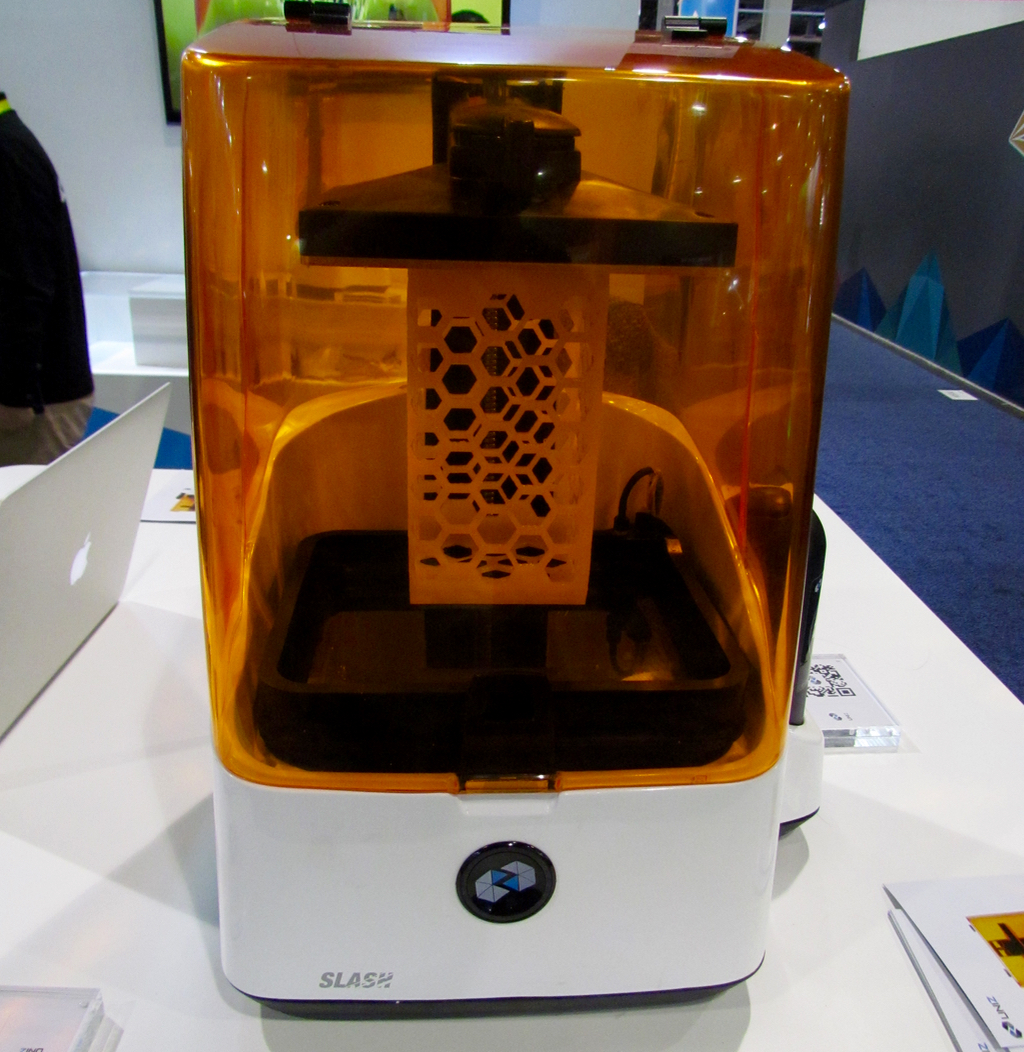At CES we encountered a booth from startup UNIZ that displayed a resin 3D printer that is extraordinarily fast and will be on sale for a very low price.
The new startup company, pronounced “Uni-Zee”, is based in San Diego, where they’ve been secretly working for the last 18 months on an advanced – but low cost – resin-based 3D printer, the “Slash”. (We suspect the name is inspired by the “SLA” 3D printing process.)
The Slash at first glance appears to be a typical resin 3D printer, with the UV-blocking cover in an attractive case. But the important matters take place inside the machine.
We asked CEO Dr. Houmin Li to explain how it works:
But what’s really going on here? Evidently they don’t use DLP or Laser approaches to solidifying layers as most other resin 3D printers do. Instead they use LCD Masking in which an LCD selectively permits pixels of UV light to pass through and solidify a layer of resin.
This enables the Slash to print layers as fast as a DLP – and with higher resolution. Apparently, the machine can print layers as large as 0.200mm for faster prints and as small as 0.010mm for finer detailing.
The Slash includes an automatic resin level control system, which ensures that the level of resin in the build tank is at the optimum level, presumably for best focus of the UV light. Here you can see their external bottle mount for resin. They say this makes unattended printing possible by automatically filling the tank.
Another brilliant innovation is to overcome the perils of tank-sticking, where in most resin-based 3D printers the new layer sticks to the bottom of the resin tank when formed. This requires a lengthy and careful “peeling” process for each layer.
UNIZ has overcome this by simply applying a non-stick coating to the tank surface. Thus, this machine does not have to “peel” and can print at very high speed. We weren’t told the speed specification, but looking at a few sample prints and comparing to the stated print time, it appears they may be able to hit speeds as high as 10cm per hour! Yes, that seems ridiculous, but we asked for some clarification.
Li explained that the Slash can print 50 times faster than the Formlabs Form 2. Wut? FIFTY TIMES?
Yes, he explained, but he’s measuring in “volumes of material printed”, where the Slash can deposit more than 1,000cc of material per hour. While the Slash can print faster due to the elimination of the peeling step, it also prints the entire layer at a time, whereas the Form 2 has a laser that must laboriously trace out each pixel of each layer.
He demonstrated this by launching Formlabs’ own PreForm slicing software. We saw the estimated time for a large object and compared it with Slash’s own slicing software and indeed it was approximately fifty times faster. We didn’t see the printer running, but regardless of how you measure it, the Slash is going to be a very quick machine.
Now for the most important part: the price. While the Slash is not yet on sale, they expect to launch it on Kickstarter in a month or so. The price is said to be somewhere between USD$1,500 and USD$2,000.
This is something near half the price of the Formlabs Form 2, who now appear to be Slash’s main competitor.
Can they make this happen? We’ve learned that the company has already received “a couple of millions” in investment dollars from unnamed investors, sufficient not only to pay for a large and fancy CES booth, but also to build and launch the machine.
We asked whether they will be able to knock out large quantities of units if the Kickstarter proves popular, and were told that the units on display were actually pre-production models, produced with methods similar to final manufacturing, so it seems they’ve already made deals with large manufacturers to produce the machines in quantity. They’re expecting to ship in Q3/Q4 of 2016.
Will you be buying one of these?
Via UNIZ





